For the past several decades, IPAs have been growing in popularity and slowly taking over the world of craft beer. Everyone seems to have the same goal of crafting the next best IPA, which has led to several different off-shoots and styles. One such example is the New England IPA, which is one of the more recent riffs on that classic IPA. The New England IPA is a welcome change to the typical dry, bitter taste that had become the norm for IPAs and West Coast IPAs.
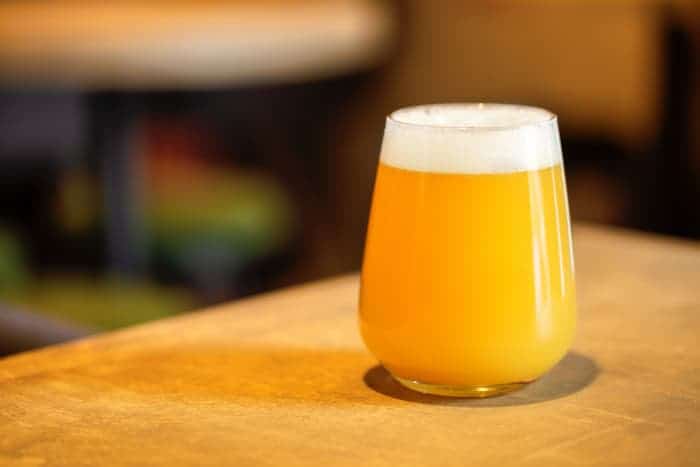
If you want to know more about New England’s adaptation of the IPA, you’ve come to the right place. Keep reading to learn all about the New England IPA beer style!
What Exactly is a New England IPA?
A New England IPA is similar to other IPA styles, but with both subtle and obvious differences. For one thing, New England IPAs are much hazier and cloudier than other IPAs and have a different taste and mouthfeel. Part of the reason for the different characteristics is in the ingredients that are used, namely the hops and yeast.
However, another reason that New England IPAs are slightly different is because they’re brewed differently. Hops and various ingredients are added at different times during the brewing process, and the water chemistry is slightly altered.
No matter what’s different about this derivation of the IPA classic, it’s quickly becoming a cult favorite. New England IPAs tend to be slightly sweeter and less bitter than traditional IPAs and they also have a more tropical feel to them. If you love the aroma and taste of an IPA but aren’t a big fan of the bitterness, a New England IPA is worth trying.
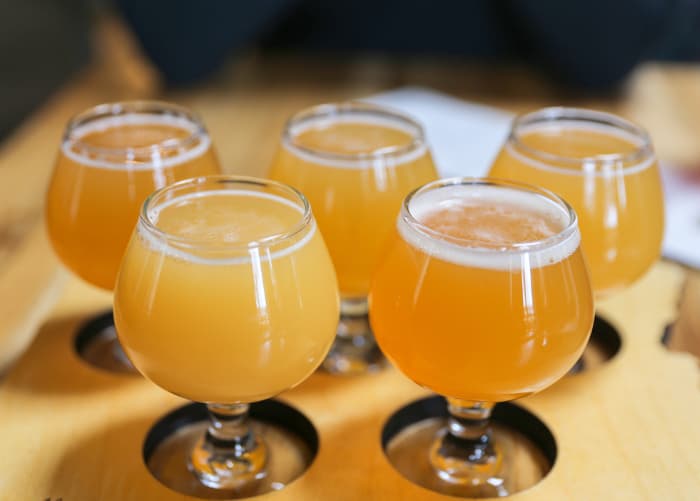
History of New England IPA
New England IPAs are recent enough in their origin that it’s very easy to peg exactly where it came from. As the name indicates, NEIPAs originate in the New England states, specifically Vermont. The very first beer of its kind was brewed by brewmaster John Kimmich of The Alchemist. Though some locals were pushing for the name to be changed from New England IPA to Vermont IPA, the original name stuck.
The beer that Kimmich was experimenting with when he created the NEIPA went on to be called the Heady Topper. Kimmich was using a traditional IPA recipe, but decided to alter it slightly. Pasteurizing and filtering of IPAs was typical at the time to extend the shelf life of canned or bottled beer. However, John decided to forgoe this process and the result was a hazier and cloudier IPA, now known as the New England IPA.
NEIPAs first came onto the national radar in 2011, but didn’t really take off until 2015 when the Beer Judge Certification Program Style guidelines for an NEIPA were released. Immediately after this, brewers across the country started creating their own versions of New England IPAs. Eventually, the term “Hazy” started being used in place of New England and the terms are now used mostly interchangeably.
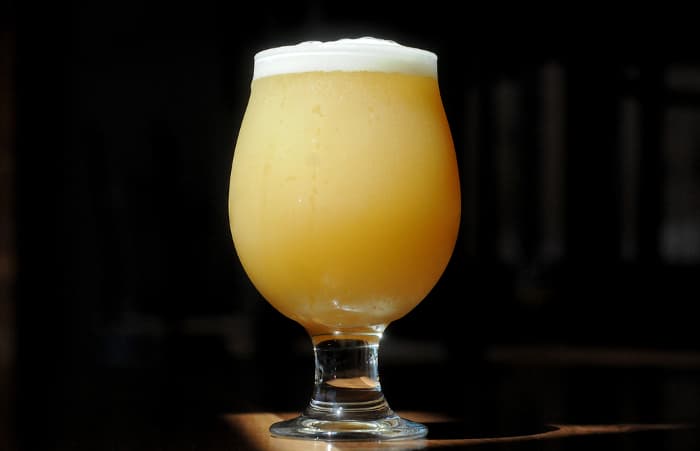
Characteristics of a New England IPA
New England IPAs tend to be slightly fruitier, hazier, and less bitter than traditional IPAs. Even West Coast and Milkshake IPAs are typically more bitter than the NEIPA. They’re most remarkable for their intense haziness which has led to them being nicknamed Hazy IPAs. It’s often thought of as a souped up version of a pale ale, but usually uses more hops and has a higher alcohol content.
Because of how recently it came onto the beer scene, New England IPAs are still working to gain traction and boost their reputation. Many IPA lovers think of Hazy IPAs as a sort of outlier and not a true IPA because of how they’re brewed. New England IPAs don’t embrace the hoppy bitterness that’s become typical of IPAs, which has some thinking that it doesn’t deserve to be called one.
However, regardless of you feel about the NEIPA, the world has formed its own opinion and has given it a stamp of approval.
Flavor and Aroma
Like all IPAs, NEIPAs use a variety of hops in their brews. However, they tend to be on the fruitier and sweeter side of things rather than on the bitter side. Sweet undernotes are also accentuated by yeast esters. Other flavors and aromas that are typical of Hazy IPAs are tropical ones such as passionfruit, guava, papaya, mango, and pineapple. However, like all beer varieties, there’s a ton of wiggle room within the category that is the NEIPA.
No matter what the over-arching flavor and aroma profile is, the main feature of NEIPAs is that they aren’t bitter. That is, of course, not as bitter as other IPA styles.
Malt Character
Like most IPAs, the NEIPA doesn’t feature malt as one of their go-to ingredients. IPAs are famous for their utilization of hops and the NEIPA is no exception. You can expect a neutral and mostly unnoticable malt character with most New England IPAs.
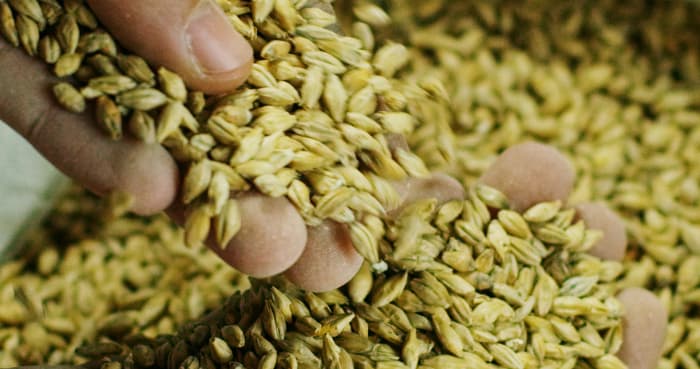
Mouthfeel
The one area where malt does make its presence known is in the mouthfeel of NEIPAs. Flaked malts and the special water chemistry of this beer style makes it feel soft and silky on the tongue. They also typically have a sweeter and fruitier aftertaste than other IPAs.
Clarity
Hazy IPAs live up to their nickname thanks to their unprecedented haziness. The exact origin of the haziness isn’t completely known, but it has to do with the ingredients and the fact that it’s brewed slightly differently than other IPAs.
Alcohol Content
NEIPAs typically have a moderate to high alcohol content in comparison to other types of beer. You can expect an average of 6 to 6.5% ABV in most Hazy IPAs. This is a beer style that you don’t typically drink more than two or three of in a single setting if you plan to keep your wits about you.
Food Pairings With a New England IPA
New England IPAs certainly aren’t everyone’s cup of tea and they aren’t a beer that you can eat just anything with. However, if you want to pair something with your NEIPA, you should try going for savory dishes such as pork tenderloin, pork chops, ham, and other white meat dishes. For dessert, a nice creme brule will blend surprisingly well with a Hazy IPA.
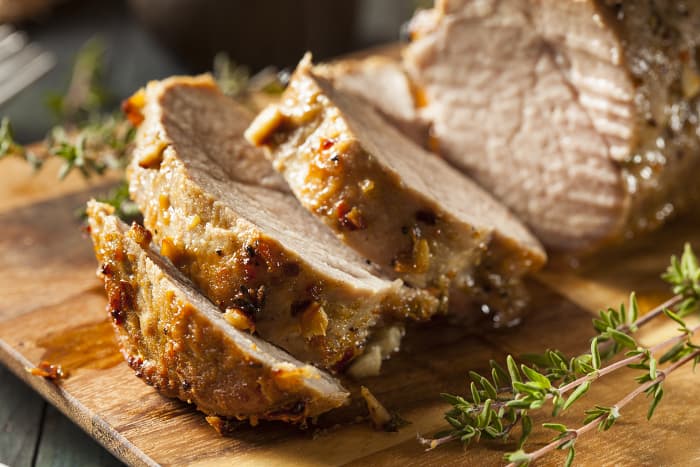
How are New England IPAs Different Than Other IPAs?
New England IPAs are one of the hottest trends in the beer industry. While people certainly love traditional IPAs, NEIPAs are attracting a whole new crowd to the beer scene. Their lack of or smooth bitterness combined with sweet and fruity notes makes them preferable to their more bitter counterparts.
While it may be different from other IPAs in its level of bitterness and sweetness, it still tastes like an IPA. What I mean is that you’ll have no doubt that you’re drinking an IPA if you close your eyes and take a sip of a New England IPA. If you pay attention, you can still note a definite bitterness.
Where Can I Get a Good New England IPA?
Since they exploded onto the scene nearly a decade ago, New England IPAs have spread everywhere. On a commercial level, they’re typically referred to as Hazy IPAs rather than New England IPAs. Several of the most popular versions are Hazy Little Thing from Sierra Nevada Brewing Company and Wicked Hazy Juicy New England IPA from Samuel Adams.
No matter what bar, brewery, grocery store, or liquor store you visit in the country, however, they’ll likely have a New England or Hazy IPA as an option.
Conclusion
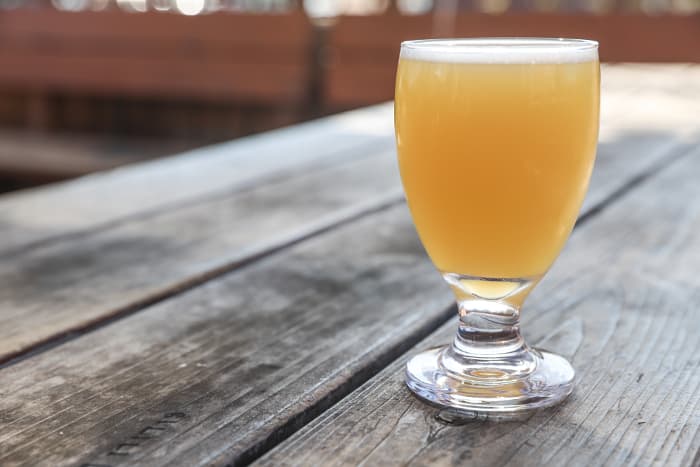
Whether you love IPAs or not, a New England IPA is worth a try. It’s the perfect medium between IPAs and the rest of the beer industry, and hopes are that it will usher drinkers from one style to another. If you haven’t had the pleasure of trying an NEIPA yet, you would do well to jump on the bandwagon and join the Haze Craze!
To learn all about other styles of beer, click here for our beer style profiles.
